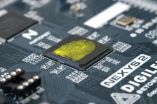(Press-News.org) ANN ARBOR, Mich. — Without fanfare, hundreds of thousands of children surrender their tonsils to a surgeon's scalpel each year, usually to alleviate recurring infections and obstructive sleep problems. Most of the time, the snipped tonsils are sent to a pathologist, who looks for evidence of more serious medical problems, like unsuspected cancer.
But this common practice may not be cost-effective because those additional examinations rarely lead to the discovery of hidden disease, a new University of Michigan Heath System analysis shows.
The approximately $35 million spent nationwide on such examinations each year might have more impact if spent elsewhere in the healthcare system, says the study's senior author, Marc C. Thorne, M.D., M.P.H., assistant professor of otolaryngology at the U-M Medical School.
"The question is: How do we make rational use of our heath care dollars?" asks Thorne. "It's a matter both of economics and of societal values."
The findings, published online ahead of print publication in the journal Otolaryngology–Head and Neck Surgery, are but a single example from the larger, ongoing debate about how to best conserve resources, create efficiencies and lower the cost of health care.
Pathologists examine tonsillectomy specimens in two ways: a visual, or "gross," examination and microscopy. Microscopic examination is nearly three times more expensive than visual inspection.
Forty-two percent of specimens receive gross analysis, 38 percent are examined under the microscope and 20 percent are discarded without examination, according to a 2001 survey of American Academy of Otolaryngology members.
To determine the effectiveness of each practice, Thorne and his colleagues pored over data from 5,235 tonsillectomies conducted at U-M between 1996 and 2008.
A pathologist performed a visual examination in 4,186 of those cases – and zero cases of additional disease were identified. Meanwhile, the collective cost of those examinations is roughly $150,000.
"Looking grossly might seem like next best alternative to the expense of putting every specimen under the microscope," Thorne says. "But it may be the worst of both worlds – the data show you're unlikely to find anything, but you're still incurring significant expense."
While better at identifying disease, microscopic examination also turned up few unsuspected problems. The incidence is so low that the researchers estimated over $750,000 would need to be spent for every case of lymphoma found.
Out of 1,066 microscopic examinations, 18 cases of disease were found, all of which were suspected before surgery – either because a patient was known to be at higher risk because they had previously received an organ transplant or a surgeon noticed something suspicious and requested additional scrutiny.
No one is suggesting that discovering hidden cancers and other diseases isn't important, Thorne says. The question is what we might be giving up elsewhere in order to find those rare cases.
Part of the problem is a disconnect between the service and the payment. For a parent with insurance, there might be no additional out-of-pocket cost to have their child's tonsil's examined under a microscope. But as a society we have to balance those individual desires with the burden on the overall system, Thorne explains.
"If we're going to make a rational decision – say, 'I don't care how much it costs, missing a lymphoma in a child is unacceptable' – then we should be doing microscopy all the time. If we're just doing gross analysis, we're still spending a lot of money, yet we know we're unlikely to find anything that way."
Still, routine analysis has some non-clinical benefits, such as its use in training pathologists, the authors note.
Jonathan McHugh, M.D., an assistant professor of pathology at U-M Medical School and one of the study's authors, says some pathologists may be resistant to change because they think of themselves as the last line of defense.
"In this instance, I think the data shows we haven't been that valuable in that role," McHugh says.
###
Additional U-M Authors: Marc E. Nelson, M.D.; T.J. Gernon, M.D.; Joseph C. Taylor, M.D.
Reference: "Pathologic Evaluation of Routine Pediatric Tonsillectomy Specimens Analysis of Cost-Effectiveness," Otolaryngology–Head and Neck Surgery, published online Jan. 31, 2011.
Resources:
U-M Department of Otolaryngology, www.med.umich.edu/oto
U-M Department of Pathology, www.pathology.med.umich.edu
The great tonsil dilemma
Is routine analysis of pediatric tonsillectomy specimens worth the money? New U-M study suggests perhaps not
2011-02-09
ELSE PRESS RELEASES FROM THIS DATE:
CeBIT 2011: Electronic fitness trainer
2011-02-09
This release is available in German.
Eating a healthier diet, getting more exercise and doing more sports – lots of people recommit themselves to these goals over and over. But one's baser instincts are often stronger and invincible. On the couch in the evening, you take stock of the day only to admit that you have failed to rally once again. And yet, physical fitness is now considered a remedy for many illnesses. Particularly for older people, daily exercise is important – not only during rehabilitation following major surgery but also for one's general sense of physical ...
The success of male bustards is measured by their 'beards'
2011-02-09
Up until now it was unknown whether males of the great bustard (Otis tarda), an emblematic bird in Spain and endangered at a global level, transmit information on their weight, size, and age through their plumage. For the first time a study shows that the 'beards' and the design of the neck are "reliable" indicators of the weight and age of their bearers, and are used to both avoid fights with competitors and to attract females.
"The heaviest males (best physical condition) make it known to other males through the length and number of 'beards', and thereby avoid bloody ...
Fingerprint makes chips counterfeit-proof
2011-02-09
This release is available in German.
Product piracy long ago ceased to be limited exclusively to the consumer goods sector. Industry, too, is increasingly having to combat this problem. Cheap fakes cost business dear: The German mechanical and plant engineering sector alone lost 6.4 billion euros of revenue in 2010, according to a survey by the German Engineering Federation (VDMA). Sales losses aside, low-quality counterfeits can also damage a company's brand image. Worse, they can even put people's lives at risk if they are used in areas where safety is paramount, ...
The most genes in an animal? Tiny crustacean holds the record
2011-02-09
Scientists have discovered that the animal with the most genes--about 31,000--is the near-microscopic freshwater crustacean Daphnia pulex, or water flea.
By comparison, humans have about 23,000 genes. Daphnia is the first crustacean to have its genome sequenced.
The water flea's genome is described in a Science paper published this week by members of the Daphnia Genomics Consortium, an international network of scientists led by the Center for Genomics and Bioinformatics (CGB) at Indiana University (IU) Bloomington and the U.S. Department of Energy's Joint Genome Institute.
"Daphnia's ...
Wolverines threatened by climate change, earlier springs
2011-02-09
The aggressive wolverine may not be powerful enough to survive climate change in the contiguous United States, new research concludes.
Wolverine habitat in the northwestern United States is likely to warm dramatically if society continues to emit large amounts of greenhouse gases, according to new computer model simulations carried out at the National Center for Atmospheric Research (NCAR) in Boulder, Colo.
"The researchers have combined regional-scale climate projections with knowledge of a single species and its unique habitat to examine its vulnerability to a changing ...
Experimental approach may improve healing of diabetic wounds and bed sores
2011-02-09
MAYWOOD, Ill. -- Loyola University Health System researchers are reporting on a promising new approach to treating diabetic wounds, bed sores, chronic ulcers and other slow-to-heal wounds.
It may be possible to speed healing by suppressing certain immune system cells, researchers wrote in the February, 2011, issue of the journal Expert Review of Dermatology.
The cells are called neutrophils and natural killer T (NKT) cells. These white blood cells act to kill bacteria and other germs that can infect wounds. NKT cells also recruit other white blood cells to the site ...
Elder law expert: Health care reform act a mixed bag for seniors
2011-02-09
CHAMPAIGN, Ill. – Although the effects of the controversial health care reform act will be somewhat muted for many older Americans, it will inevitably have enough of an impact that seniors will discover that there is plenty to like and dislike about the law, a University of Illinois expert on elder law cautions in published research.
Law professor Richard L. Kaplan says the virtues of the Patient Protection and Affordable Care Act of 2010 are a "mixed bag," and how it will affect any one person depends on that person's specific situation.
"You have to expect some negative ...
Lack of sleep found to be a new risk factor for colon cancer
2011-02-09
An inadequate amount of sleep has been associated with higher risks of obesity, heart disease, diabetes, and death. Now colon cancer can be added to the list.
In a ground-breaking new study published in the Feb. 15, 2011 issue of the journal Cancer, researchers from University Hospitals (UH) Case Medical Center and Case Western Reserve University School of Medicine, found that individuals who averaged less than six hours of sleep at night had an almost 50 percent increase in the risk of colorectal adenomas compared with individuals sleeping at least seven hours per night. ...
Income inequalities are increasing the occurence of depression during financial crisis
2011-02-09
Due to the recent economic crisis, an increase of health inequalities between socio-economic groups has been noticed in both developed and developing countries.
The World Health Organization, the World Bank and the United Nations Development Programme have all reported these inequalities and emphasized its importance and made this issue a priority.
There is evidence that such inequalities not only affect general health, but have a particular impact on mental health.
A new study, published in World Psychiatry, the official journal of the World Psychiatric Association ...
Language may play important role in learning the meanings of numbers
2011-02-09
New research conducted with deaf people in Nicaragua shows that language may play an important role in learning the meanings of numbers.
Field studies by University of Chicago psychologist Susan Goldin-Meadow and a team of researchers found deaf people in Nicaragua, who had not learned formal sign language, do not have a complete understanding of numbers greater than three.
Researchers surmised the lack of large number comprehension was because the deaf Nicaraguans were not being taught numbers or number words. Instead they learned to communicate using self-developed ...
LAST 30 PRESS RELEASES:
The vast majority of US rivers lack any protections from human activities, new research finds
Ultrasound-responsive in situ antigen "nanocatchers" open a new paradigm for personalized tumor immunotherapy
Environmental “superbugs” in our rivers and soils: new one health review warns of growing antimicrobial resistance crisis
Triple threat in greenhouse farming: how heavy metals, microplastics, and antibiotic resistance genes unite to challenge sustainable food production
Earthworms turn manure into a powerful tool against antibiotic resistance
AI turns water into an early warning network for hidden biological pollutants
Hidden hotspots on “green” plastics: biodegradable and conventional plastics shape very different antibiotic resistance risks in river microbiomes
Engineered biochar enzyme system clears toxic phenolic acids and restores pepper seed germination in continuous cropping soils
Retail therapy fail? Online shopping linked to stress, says study
How well-meaning allies can increase stress for marginalized people
Commercially viable biomanufacturing: designer yeast turns sugar into lucrative chemical 3-HP
Control valve discovered in gut’s plumbing system
George Mason University leads phase 2 clinical trial for pill to help maintain weight loss after GLP-1s
Hop to it: research from Shedd Aquarium tracks conch movement to set new conservation guidance
Weight loss drugs and bariatric surgery improve the body’s fat ‘balance:’ study
The Age of Fishes began with mass death
TB harnesses part of immune defense system to cause infection
Important new source of oxidation in the atmosphere found
A tug-of-war explains a decades-old question about how bacteria swim
Strengthened immune defense against cancer
Engineering the development of the pancreas
The Journal of Nuclear Medicine ahead-of-print tip sheet: Jan. 9, 2026
Mount Sinai researchers help create largest immune cell atlas of bone marrow in multiple myeloma patients
Why it is so hard to get started on an unpleasant task: Scientists identify a “motivation brake”
Body composition changes after bariatric surgery or treatment with GLP-1 receptor agonists
Targeted regulation of abortion providers laws and pregnancies conceived through fertility treatment
Press registration is now open for the 2026 ACMG Annual Clinical Genetics Meeting
Understanding sex-based differences and the role of bone morphogenetic protein signaling in Alzheimer’s disease
Breakthrough in thin-film electrolytes pushes solid oxide fuel cells forward
Clues from the past reveal the West Antarctic Ice Sheet’s vulnerability to warming
[Press-News.org] The great tonsil dilemmaIs routine analysis of pediatric tonsillectomy specimens worth the money? New U-M study suggests perhaps not






